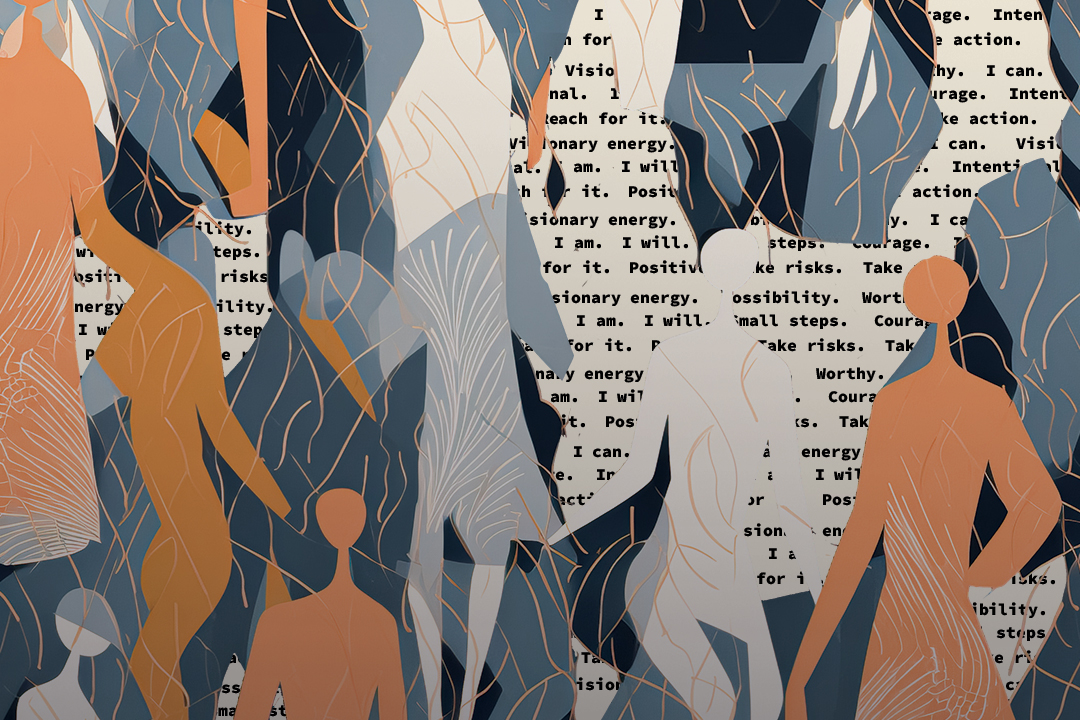When Siobhan McTighe was a detective for the Fort Collins Police Department, she investigated murders and cases involving children. Over time, she got used to seeing people on their worst days, but she also witnessed incredible feats of strength.
“In moments like that, you see people at their most courageous points,” she says of victims coming forward to confront perpetrators in the courtroom. “There’s such power, vulnerability and inspiration that happens in those same moments when we can be so focused on the negatives.”

Siobhan McTighe
Now McTighe is a police sergeant in Windsor and runs a coaching business, The Kalyana Project (meaning “the wellbeing project”), which she formed from her research on trauma, resilience and mental health. She helps clients, many of whom are first responders, form a more positive outlook on life.
McTighe could easily view the world as a dark place, but she knows that what we focus on is what we see. If we start noticing the positives around us—in her experience, the “hero’s walk”—that can alter our beliefs and change the direction of our lives, she says. It’s a concept known as the law of attraction.
“To me, the law of attraction means that we are all acting as magnets and creating our own life stories through choices, thought patterns and actions,” she says. “If you’re thinking in a healthy and productive way, you’re going to act in that same vein. Having control over your thoughts and being intentional with how you’re viewing things becomes very important.”
Understanding the law of attraction
Science backs up this idea, according to Nikki Hendricks, a registered nurse in Fort Collins who became a life coach through the Jay Shetty Certification School after nearly a decade in the emergency room. Our brains generate electrical activity, therefore different thoughts and emotions create different brain waves. Those thoughts and feelings will find an “energetic match in your external world,” she says, meaning that the experiences, projects and people that come into your life will align with your positive or negative thoughts.

Nikki Hendricks
Realizing that we have some control over our thoughts, emotions and subsequent outcomes is empowering, Hendricks says. The brain’s neuroplasticity—or ability to create new patterns of thinking—allows us to choose more positive thoughts and, with intention and repetition, harness the ability to shift our lives as a result.
The key is the brain’s reticular activating system (RAS for short), which is responsible for filtering information, Hendricks says. The RAS likes familiarity, so it defaults to past experiences to keep us safe. In other words, if we can teach our brain that new ways of thinking, being and doing are safe, those things will become easier over time.
This phenomenon occurs because your brain seeks out real-life evidence that supports the thing you’re thinking about, says Jenn Adamson, a Windsor-based leadership coach, registered nurse and TEDx speaker who works with executives and business owners to bring more joy and balance to their demanding lives. This can work against us too: Adamson counsels high achievers who often get stuck in negative cycles they can’t power their way through.
“When we’re in a place of feeling overwhelmed or stuck, we’re often not thinking in the higher realm,” she says. “We’re thinking things like, ‘What’s wrong with me? Why is nothing working?’ You’re activating your RAS to find evidence in your real world that matches those questions you’re asking yourself. So, the point is to ask yourself bigger, more expansive questions.”
Manifestation techniques
First, Adamson suggests asking yourself how you want to feel and what small steps you can take to allow those feelings in. Maybe you want to feel more at peace or be more organized, so you journal for 15 minutes every day to calm your nervous system and get your thoughts on paper. Or maybe you want to feel more connected to your family, so you visualize yourself spending quality time with them and then let those warm, fuzzy feelings keep you from taking work calls during family dinners.

Jenn Adamson. Photo by Rachell Monteleone.
Once you make space for desired emotions to emerge, you’ll start to notice a difference in how you operate, and it’ll be easier to take larger steps in line with your goal. The important thing is to be open to change, Adamson says. When doubt creeps in and nudges us back to our place of familiarity, she says we must ask ourselves, “If I don’t change things, what is that going to cost me?” Knowing that cost can be enough to push us through the discomfort.
“We often operate in this ‘I’ll believe it when I see it’ mentality, but we have to see it now,” she says. “We have to keep going back to the energy of possibility. Keep choosing that as your nonnegotiable and watch as a lot of magic unfolds.”
Similarly, Hendricks says it’s important to be aware of what you want, know the intention behind it and take consistent actions to achieve that goal. Like Adamson, she recommends focusing on feelings rather than specific outcomes so that you can expand the realm of possibility and avoid disappointment. Small steps often lead to more progress than big ones because they help you build momentum, she says.
There is a wide spectrum of emotions, so you might not be able to, say, jump from believing “I am unworthy” to “I am worthy,” she says. Instead, choose the higher thought that feels safe for you, even if it’s indifference, then keep climbing up as you notice things that reinforce those beliefs. When you start to notice the ways friends, family or coworkers show their appreciation for you, for example, those instances will help you to believe it.
Whereas the law of attraction is the concept of like attracting like, manifestation is how you achieve your goals, Hendricks says. Those who are more visual might prefer vision boards, while those who are good with words might resonate more with journaling or verbal affirmations. No matter which method you choose, she suggests using “I am” statements rather than “I want” since “I am” instills the belief and leaves little room for doubt.
“You don’t have to pick one way of strengthening those neural pathways,” Hendricks says. “Try different things and see what feels most natural for you. Then it’s about action; that’s what differentiates manifestation from just a dream.”
Often what prevents us from acting on our mantras is the fear of failure, McTighe says. She’s seen many people who have great ideas but aren’t willing to take action to make them a reality.
“There is magic in our ability to create the life we want, and that magic is found in discipline, risk and action taking,” she says. “Victory comes with the risk of failure, but that’s where the good stuff lives. You have to have the courage to reach for it.”
Tips for Manifesting in the New Year
Getting fit.
If you want to be athletic, you have to view yourself as an athlete, or someone who is strong, healthy and confident, says Siobhan McTighe, Windsor police sergeant and founder of The Kalyana Project. Then she recommends doing what athletes do, even on a small scale, like driving to the gym. Once you check that off your list, you’re more likely to walk in and begin a workout routine.
Attracting friendships and relationships.
In order to meet others who share your interests and values, you have to put yourself in the right social situations, says Nikki Hendricks, a life coach based in Fort Collins. This could be a club, sports team or religious group, for example. You won’t meet anyone simply by journaling or repeating mantras, though that’s a great first step to train your brain to believe that there are friends or a romantic partner out there for you.
Improving finances.
Instead of saying, “I want to make more money,” ask yourself what that money could do, Hendricks says. With that intention comes meaning and emotion, such as providing greater security for your family, which will motivate you to pay off debt, cut back on spending and save for the future. Once you start paying off smaller debts, McTighe says that momentum will help you reach larger financial goals.
Finding enjoyment at work.
Many people, especially leaders, are happier at work when they can tap into their full creative potential. Imagine what that would look like for you, then pinpoint the time-consuming tasks that limit your “visionary energy” and find ways to offload them, says Jenn Adamson, a high-performance leadership coach based in Windsor. From delegating tasks to reducing the number of emails in your inbox, small shifts can have a big impact.







